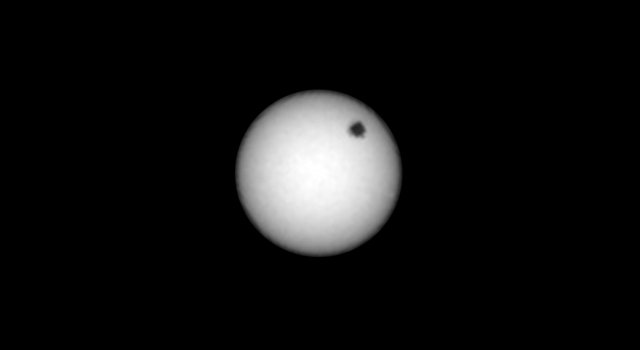
In a new study, researchers report that NASA’s Curiosity Mars rover has captured two solar eclipses on Mars.
Since the past few weeks, Curiosity has been sending back some photos of solar eclipses caused by Mars’ two moons, Phobos and Deimos.
The research was conducted by a team from the Jet Propulsion Laboratory.
Curiosity is a car-sized rover designed to explore the crater Gale on Mars as part of NASA’s Mars Science Laboratory mission.
It aims to explore the red planet for evidence the planet could have once supported life.
The Mars rover was launched from Cape Canaveral on November 26, 2011, and landed on Aeolis Palus inside Gale on Mars on August 6, 2012.
It brought along eclipse glasses. The solar filters on its cameras could look directly at the Sun.
According to the team, the moon Phobos was imaged on March 26, 2019, and the moon Deimos was photographed on March 17, 2019.
In the two solar eclipses, Phobos doesn’t completely cover the Sun, so it was an annular eclipse.
Deimos is very small compared to the disk of the Sun, and the scientists said it’s transiting the Sun.
In addition, Curiosity’s cameras observed the shadow of Phobos on March 25, 2019.
The team suggests that these solar eclipses help with the understanding of each moon’s orbit around Mars.
The observations over time help provide the details of each orbit and help make Mars relatable.
The findings of eclipses, sunrises, sunsets, and many natural phenomena make Mars more real to the public.
Future work will continue the observations and provide more information about the orbits of both Martian moons.
Copyright © 2019 Knowridge Science Report. All rights reserved.



